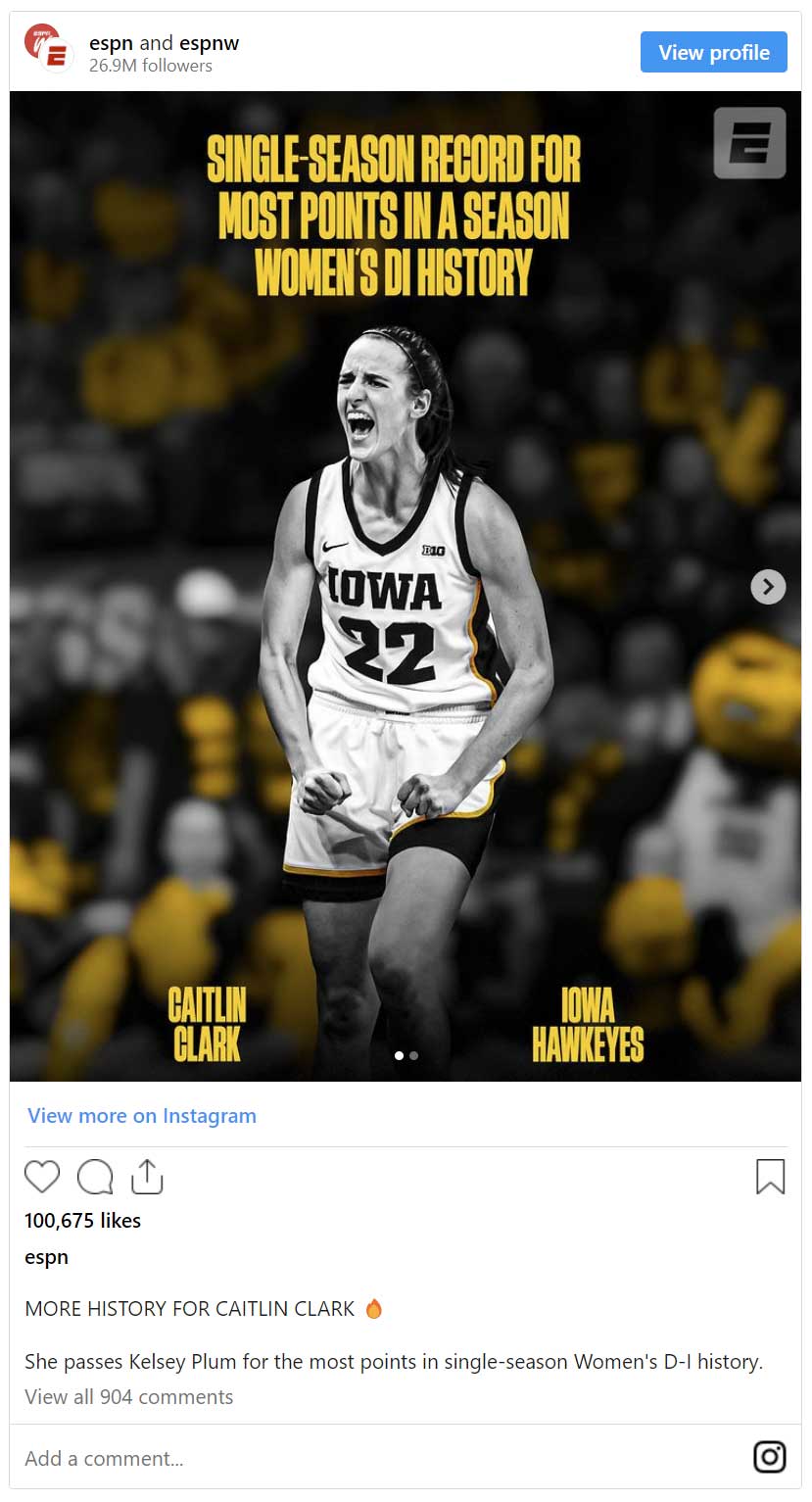Analytics has become a big part of the game of basketball. Teams use data to design their game plans, figuring out how to maximize each possession on offense and how best to stop their opponent from scoring. During the NCAA Tournament, college teams use analytics to scout less familiar opponents they might end up being matched against in their bracket.
For fans, March Madness brings a chance to crunch some numbers too, whether that is picking winners for a low-stakes office pool or making more advanced bets on increasingly popular gambling apps. But every so often it is an individual player that takes the basketball world by storm and brings about his or her own set of data that has an impact across the sport. Such is the case with Caitlin Clark.
Who is Caitlin Clark?
Caitlin Clark is a guard who led the Iowa Hawkeyes to the Big Ten championship in her senior season. During the 2023-2024 regular season, she led the nation in offensive categories such as points, assists, and 3-pointers. Clark’s profile has grown over her college career as she has continually wowed with her play on the court and increased her national exposure: Iowa lost the title game in 2023, and in the final week of this year’s regular season she set the all-time record for points scored in an NCAA Division I career.
It remains to be seen how Iowa fares in this year’s NCAA Tournament, but there are certain known quantities in the often-unpredictable March bracket. Whichever cities Clark ends up taking Iowa to are bound to see some kind of bump, if the data holds true.
Data in college athletics
The intersection of data and collegiate athletics is nothing new. Institutions of higher education are always weighing the economic viability of their sports teams, whether that’s in terms of costs and whether a sport needs to be cut or added, or if it’s in terms of the athletics program’s impact on elements like campus culture and enrollment. When a star athlete comes to town, though, other numbers start to come into play.
Iowa sold out every home game this season, and every away game the team played sold out as well. ESPN data shows that Clark’s away games averaged about 13,000 fans, more than twice as high as the average for non-Iowa games at those colleges. Ohio State set a school women’s basketball attendance record in January against Iowa, drawing 18,000 fans. For the schools that play Iowa, the extra fans come with some extra maneuvering around other data points, including staffing, parking, and opening additional concession stands. It’s not just in the arena—hotels, parking garages, and restaurants need to factor in additional crowds when Clark comes to town. And Iowa City sees its own Iowa women’s basketball bump: restaurants near campus say business can more than double on game nights.

What the future might hold
When Clark set the all-time Division I scoring record, the game averaged 3.39 million television viewers, peaking at 4.4 million, making it the most-watched regular season women’s basketball game in 25 years. With the advent of streaming, TV ratings are a less reliable metric than in years past, but they have proven to be another reliable way to measure Clark’s impact. Experts expect those numbers will carry into the NCAA Tournament.
Fans of women’s basketball in general hope it will carry even further. Though COVID-era eligibility rules would allow Clark to play a fifth season at Iowa, she has declared for the WNBA Draft. There are more data points that can track the popularity of the WNBA. The Las Vegas Aces, for example, became the first WNBA team to sell out its allotted season tickets. TV ratings will continue to offer an indication of Clark’s impact on the league as she continues her career at the professional level. Other metrics could provide insight into Clark’s earning potential when it comes to endorsements, which already includes a stacked portfolio from her college sponsorships as well as more than one million Instagram followers.
Colleges and universities might not be using data to decide the exact number of hot dogs to stock for a basketball game in the same way they might be analyzing admissions data to inform long-term strategies, but a flexible solution can provide an organization with options when it comes to data-driven decision-making. Businesses in any industry can benefit from the use of analytics. With the right information, a business intelligence solution can produce reports an organization can use to cut costs or make processes more efficient. March Madness can be unpredictable. Your business doesn’t have to be, thanks to analytics.
- 3 Important Characteristics of a Cannabis Analytics Solution - May 1, 2024
- Analyzing the Challenges of Pharmaceutical Supply Shortages - April 26, 2024
- Summer is an Opportunity for Digital Transformation in Education - April 17, 2024




